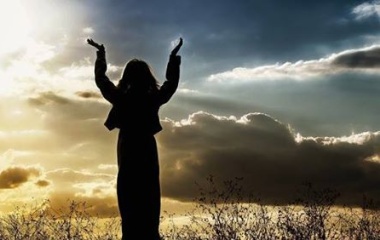
Considering the amount of time one spends at work, there is little sadder than being in a job one does not like. How wonderful it is when one loves what one does – with payment for one’s work almost a bonus!
Yet love of a job is not enough – at least from a Torah perspective. The job must be appropriate for the person physically, intellectually and emotionally. Our Sages define avodat parech, slave labour, such as that forced upon us by the Egyptians, as giving men women’s work and women men’s work (Sotah 11b).
How sad when one is overqualified for a job, allowing one’s talents to atrophy; and how scary when one is underqualified for the job at hand, potentially placing people at grave risk of harm. If this is true in the private sector, how much more so when dealing with the public sector? We are no longer just talking about personal satisfaction on the job but societal impact, affecting the moral fiber and even physical safety of the public at large.
“For many are those she has struck dead, and the mighty are her victims” (Mishlei 7:26). The “she” whom Shlomo Hamelech is referring is the archetypal harlot. In a comment which can be seen as directed at himself, Shlomo Hamelech warns how sexual impropriety can ruin one’s life – having brought down many a mighty person. This needs little explanation today, as we witness the “#MeToo” movement bringing down celebrity after celebrity.
In a rather daring interpretation, our Sages explain this verse as referring to the teaching of Torah.
“Rabbi Abba, in the name of Rav Huna, stated in the name of Rav: What is the meaning of ‘For many are those she has struck dead, and numerous are her victims' (Mishlei 7:26)? 'For many are those she has struck dead'; this refers a student who has not yet reached the level where he can render legal decisions, but nevertheless does so. 'And numerous are her victims': this is a student who has reached the level where he can render legal decisions, but does not issue such decisions” (Avodah Zara 19b).
The link between sexual and legal impropriety is not accidental. Let us begin with the linguistic parallel.
The term used for “struck dead” is hepeela, which has the same root as neifel, a miscarriage. A miscarriage occurs when the fetus emerges from the womb too early. Our Sages saw a parallel to a student who issues rulings before the time is ripe[1].
Shir Hashirim, describes the relationship between G-d and the Jewish people in what can only be described as erotic terms. And while less explicit, our liturgy is filled with the image of bride and groom to describe the relationship between G-d and the Jewish people. Having the wrong people interpret Torah is a form of spiritual adultery, as those closest to G-d’s Torah are pushed aside by “foreign” interpreters.
While one can always pay back stolen money, or make amends for personal hurt, sexual sins can and often do cause permanent and irrevocable harm. “Rabbi Shimon ben Menassia says: What is ‘a crooked thing that cannot be fixed?’ (Shir Hashirim 1:8) This is one who had relations with a forbidden woman and fathers a mamzer through her” (Chagigah 9a). Similarly, while many rabbinic rulings can be undone without much damage, many cannot, especially in the area of sexual relations. If one makes a mistake regarding a get, the result could very well be the birth of a mamzer. At the same time, one who cannot find a leniency—when such exists, if one searches hard enough—to free an agunah dooms an innocent woman to a life of misery.
It is the area of sexuality where holiness is most manifest. Rashi defines the command of kedoshim tiheeyu, be holy, as a call to separate from sexual immorality. The Rambam’s Sefer Kedusha contains the laws of forbidden sexual relations – and those of forbidden foods. In other words, holiness begins with the elevation of the physical. All one has to do to turn קְדֻשָׁה, holiness, into קְדֵשָׁה, prostitution, is remove one little dot under the daled, converting a kubotz into a tzere. The line between holiness and profanity is thin indeed.
Similarly, the line between over and underqualified can be equally thin. At times, one is rightfully thrust into leadership even as one is still learning on the job. One may not be fully qualified, but others may be much less so.
That it is much more than knowledge that determines whether one is qualified is hinted at by the immediately following teaching that even a sichat chulin, a mundane discussion of a Torah scholar, should be studied. It is through these discussions that one often sees the greatness of people, learning how they navigate the day-to-day of life. More than knowledge, issuing halachic rulings requires the application of knowledge.
Every halachic question has a myriad of competing factors – if it does not, it is not something that needs an expert to rule on it. Beyond the technical issues, one may have to take into consideration such factors as geography, the wealth of the questioner, impact on community and impact on family. We might have to find the proper balance between autonomy and authority, subjective feelings and objective law, historical precedent and responding to current reality, and on and on it goes. There is no book that can teach this – it is daily conversations, shimush, serving great Torah scholars, where we learn how to apply the technical knowledge that is needed. Halacha is more art than science, and two people can ask the exact same question and get a different answer. This is why we have a mara d’atra, a local authority, as only the local authority can properly apply the halacha to any given case. Only when delineating new halachic principles – time of death, for example – must the halacha be determined by global experts. But more often than not, it is the local rabbi who must then apply that principle[2].
The Eitz Yosef, in his commentary to the Ein Yaakov, adds a fascinating comment. He notes that “he saw in a book, but I forget its name[3]” that in parshat Yitro the command of לֹא תִרְצָח, “do not kill”, has a kamatz under the tzadi. Kamatz means to clench, to keep closed, and refers to those who have reached the level of issuing rulings, but keep their mouths shut. However, in parshat Vaetchanan, it reads לֹא תִרְצַח. The vowel is a patach, to open, which refers to those who are unqualified yet open their mouths to issue rulings[4]. Both silence, and speech can “kill”.
He then adds that this is the meaning behind the “al chet, that we sinned before you, b’yodim ubelo yodim, that which we knew and did not know”. While this is generally understood to be asking for forgiveness even for sins we did not know about, the Eitz Yosef explains that yodim refers to those who know the law, but do not teach; and lo yodim to those who do not know, yet still issue rulings. Come to think of it, this may just be an amplification of the classic explanation. Often, those who do not know don’t even know they do not know. Sadly, many are not even aware of their lack of knowledge, and issue rulings they sincerely believe are correct, but are above their pay grade. Fortunate are those who know what they know.
[1] In a similar vein, the Jerusalem Talmud teaches that one who eats matzah on erev Pesach is “as if he had relations with his betrothed in the house of his father in law”. The sin here is primarily one of timing. Just as one must wait until the actual marriage, the nissuin, to be intimate with one’s wife, one must not eat matzah before the proper time, i.e., until the seder. The matzah can be seen as kesef kiddushin, the item of (minimal) value given by the bridegroom to the bride, which brings about the betrothal. It was on Pesach night that the Jewish people became G-d’s special nation, as He formed a unique relationship to His nation on this night.
[2] One of the major changes– and in my view, it is not a positive one—that has taken place in recent years is the downgrading of the local rabbi in favour of “gedolim” who may have great Torah knowledge, but have limited understanding of the local scene.
[3] I find the humility inspiring. It is from Esther’s exposure of the plot to kill Achashverosh in the name of Mordechai that brought redemption to the world—teaching us the importance of attributing our sources. And when one does not know the source, that, too, is to be acknowledged.
[4] I examined a number of Chumashim, some had a kamatz for both and others a patach for both but i have yet to find a chumash with the vowels as per the Eitz Yosef.



